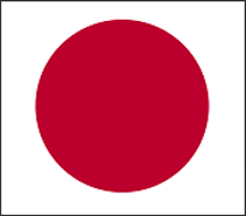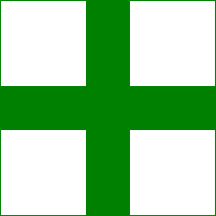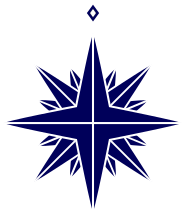 zachary harden
zachary harden
Keywords: japan | sun (red) | rising sun | roundel: star |
Links: FOTW homepage | search | disclaimer and copyright | write us | mirrors

Last modified: 2025-05-03 by  zachary harden
zachary harden
Keywords: japan | sun (red) | rising sun | roundel: star |
Links: FOTW homepage |
search |
disclaimer and copyright |
write us |
mirrors

image by Zachary Harden, 28 August 2017
A red disk bordered with white.
Just to mention, Military Aircraft
Insignia of the World explains that such a roundel was used
since the establishment of Japanese military aviation. It mentions
that sometimes the disk was also bordered yellow, and that on the
Home Defence aircraft in 1944-45 the red disk was on white square
field. After the surrender in 1945, the Allies prescribed that all
Japanese aircraft have their roundels painted white with green
cross throughout.
Željko Heimer, 4 March 2002
The Japanese Air Force was formed in 1911 and a year later a
naval air arm was formed. After a period of no military aviation
in Japan, the Japan Air Self-Defense Force (Nihon Koku-Jieitai)
was formed on 1 July 1954 together with Japan Maritime Self-Defense
Force (Kaijyo Jieitai) and Japan Ground Self-Defense Force (Rikujo
Jieitai) with their air arms.
Dov Gutterman, 18 June 2004
Member Kazutaka Nishiura emailed me a PDF of "Revising the Notice on
the Format of Signage of Aircraft Used by the SDF (Defense Agency
Notification No. 127, 1964 (Showa 46))" and this states that the
roundel is going to be red with a white border, with the border being
1/15th of the size of the roundel itself.
Classification etc. of Aircraft used
by the Maritime Self-Defense Force and Related to Painting Standards
etc.(1962/Showa 37) also has different sizes of the red disc and
white border, along with paint standards.
Zachary Harden, 26 August 2017

image by Zachary Harden, 28 August 2017
Given the date of that document, Classification etc. of Aircraft used
by the Maritime Self-Defense Force and Related to Painting Standards
etc.(1962/Showa 37) and "Revising the Notice on
the Format of Signage of Aircraft Used by the SDF (Defense Agency
Notification No. 127, 1964 (Showa 46))" it probably doesn't, but nonetheless
I'll ask; does that document describe the silhouette/low visibility insignia for
aircraft used by the Japanese Defence Force?
Jonathan Dixon, 26 August 2017
It is only used on the F-35A and there is no document to my knowledge. It turns out that the F-35A has used both a low vis and a
regular roundel for the aircraft. Upon completion, it was shown here
with the low vis roundel while at the official ceremony of delivery shows the red and white roundel used by all aircraft.
Zachary Harden, 28 August 2017

image by Zachary Harden, 28 August 2017

image by Zachary Harden, 27 August 2024

image by Nozomi Kariyasu, 17 June 2024

image by Nozomi Kariyasu, 17 June 2024
In 1945 the war was lost and the remaining military aircraft
used a white square aircraft marking with a green cross
indicating unconditional surrender.
Nozomi Kariyasu, 17 June 2024

image by Zachary Harden, 27 August 2024
Japanese Coast Guard aviation roundel & fin flash 1951-current; the emblem of the Coast Guard is used on the fin and the national flag is used on the body. (Source)
Nozomi Kariyasu, 17 June 2024

image by Zachary Harden, 27 August 2024
Japanese Coast Guard aviation roundel & fin flash 1951-current; the emblem of the Coast Guard is used on the fin and the national flag is used on the body. (Source)
Nozomi Kariyasu, 17 June 2024

image by Marc Pasquin, 4 May 2006
Flipping through a book on the history of aviation, I came
upon the reproduction of a French poster from 1915 that showed
some planes of the world. Those that are visible (its only part
of the poster) carry what you would expect in terms of markings
but Japan was unusual:
Japan: a red 5-pointed star on a white circle. The star was
part of the uniform of the Japanese so this might explain its
use. the army probably switched to the more familiar one after
the Russian revolution to avoid confusion.
Marc Pasquin, 4 May 2006

image by Zachary Harden, 27 August 2024
Japanese Coast Guard aviation roundel & fin flash 1951-current; the emblem of the Coast Guard is used on the fin and the national flag is used on the body. (Source)
Nozomi Kariyasu, 17 June 2024